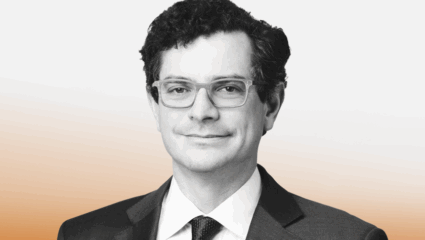In recent weeks and months, activist investors have faced a barrage of new disclosure rules emanating from the Securities and Exchange Commission, all of which are expected to complicate or even discourage insurgent fund campaigns.
The most recent proposal, introduced Feb. 25, is intended to increase transparency around short seller investments. Advisers and activists both contend that this measure wouldn’t discourage activist short sellers if adopted, though it would make their campaigns more tricky and costly.
The SEC also has proposed public disclosure rules for the multitrillion-dollar derivatives market and measures seeking to shorten a 10-day disclosure window before activists must report positions in Schedule 13D filings.
The short selling proposal is drawing a lot of attention from activist short sellers, which continue to engage in a large number of campaigns. According to research firm Insightia, activists have launched 16 short seller campaigns globally so far in 2022, compared with 126 in 2021 and 156 in 2020. Many of those targeted U.S. companies. In the U.S., activists have initiated short selling campaigns at 11 companies so far in 2022, versus 80 in 2021 and 93 in 2020.
Probably the most high-profile activist short seller effort involved Bill Ackman’s ultimately unsuccessful $1 billion campaign targeting Herbalife Nutrition Ltd. (HLF). A number of activists specialize in short selling insurgencies, including Spruce Point Capital Management LLC, which has an ongoing campaign accusing Oatly Group AB (OTLY) of overstating its revenue and margins.
The SEC provision would require fund managers to publicly publish aggregate gross short position data 14 days after the end of each month if their stakes exceeded $10 million or were equivalent to 2.5% of outstanding equity shares. According to SEC Chair Gary Gensler, the measure would “provide the public and market participants with more visibility into the behavior of large short sellers.”
Investors, however, wouldn’t need to disclose the names of their targeted companies, a big win for activists who worried that their individual positions would be revealed.
One activist short seller told The Deal that he doesn’t believe the disclosure rule would have much of an effect on his campaigns, as he would continue to be allowed to accumulate his short position under the radar until he was ready to release his presentation. “We don’t want to tip off companies that we are researching them and dabbling in their securities,” he said. “We’ve done a good job of that.”
He added that companies are looking at abnormal option or call activity to identify short sellers, and a well-known activist’s aggregate short position disclosure could be another data point to help companies identify that an insurgent short seller activist is ready to pounce.
Even so, he added, the rule would require more reporting, compliance and an increased cost of doing business, though he noted that many of his short positions don’t cross the 2.5% or $10 million thresholds.
The situation for short sellers could have been a lot worse, as the proposal points out that Nasdaq, the New York Stock Exchange and the National Investor Relations Institute had petitioned the agency to require a short seller disclosure equivalent to the agency’s 13D reporting requirement, which requires insurgent managers to disclose their common share positions when they accumulate 5% or more in equity.
A measure resembling 13D could have required activists with big short positions to disclose their accumulations in a particular corporation before they were ready to reveal their campaign and presentation. The SEC concluded, however, that the publication of managers’ aggregate gross short position data — not individual positions — would provide enough transparency.
Freshfields Bruckhaus Deringer LLP’s chief of activism defense, Elizabeth Bieber, said she didn’t believe the SEC’s short selling disclosure proposal would discourage activist short sellers.
“We have worked for boards defending against a number of short activism campaigns, and short activists don’t hide the fact that they are shorting the stock,” she said. “They’re very public about their short positions, which raises challenges for companies because they aren’t even dealing with a shareholder.”
She said companies may see from existing disclosure requirements that overall, large short positions are being accumulated. She added, however, that if the SEC’s proposal were adopted, corporations wouldn’t be able to identify which investors had a short position in their shares or whether one or multiple investors have accumulated significant short positions.
Bieber also said that managers who didn’t meet the position thresholds would not need to report their activity to the SEC either, limiting disclosures, while those who established short positions through derivatives also wouldn’t be subject to reporting requirements.
13D Changes Could Benefit Companies
The SEC also recently proposed adjusting 13D to expand its definition of groups for the disclosure requirement. An investor who shares nonpublic information about their upcoming 13D filing with another investor who buys stock after receiving the tip might need to join the first shareholder as a group and together file a 13D disclosing their combined stake, the provision states.
But Freshfields partner Ethan Klingsberg said he doesn’t believe the provision would lead to new investor groups filing 13Ds. “Activists are very deliberate about with whom they form groups for 13D purposes,” Klingsberg said.
He added that insurgent investors would continue to communicate with other shareholders to get their advice about a company’s performance, board and executive team. He said “disciplined” activists would have these conversations without crossing the line into tipping off the other investors about their intentions to accumulate shares or submit future 13Ds.
Klingsberg added that he thought another provision requiring disclosure five days after an activist owns 5%, down from 10 days currently, would be a positive for companies. He argued, however, a certain amount of asymmetry exists between what activists and companies have to disclose today.
“The frustrating thing is that when a company gets a private call from Carl Icahn saying that he’s about to become their largest shareholder and he’s going to publish a white paper next week calling for a breakup, they have to wrestle with whether that is material nonpublic information,” Klingsberg said. “That impacts the company’s ability to repurchase shares or permit insiders to trade, while Icahn doesn’t have to worry about disclosing until after he crosses the 5% threshold even though he’s accumulating shares all the while.”
Bieber said many activists spend the 10 days after they cross 5% accumulating a significant position before they have to disclose in a 13D. “That is how you get many activists with 8% or greater stakes when they file their original 13D,” she said. “Moving to five days gives a company notice before the activist can accumulate a much more significant position.”
Derivatives Changes Fall Short for Corporate Defenders
In January, the SEC proposed public disclosure rules for the derivatives market, requiring investors to disclose on a new Form 10B if they own a 5% stake in certain derivatives or cross some other ownership thresholds.
Klingsberg noted that activists may at times accumulate large derivatives positions to avoid having to obtain Hart-Scott-Rodino-Act clearance from antitrust regulators before establishing their full positions. He added that a disclosure rule requiring more derivatives disclosure would help companies respond to investors.
“Having advanced intelligence that a brand-name activist has put in place a large economic derivatives investment is very valuable information for a company that wants to understand its shareholder profile,” he said.
Klingsberg said it’s important for companies to get earlier access to activist investment accumulations, not because it will allow them to install a poison pill faster but because it will drive renewed shareholder engagement.
“When companies see that 13D filing, they know that right now it is a priority to be engaged with shareholders,” he said. “When they know that there is an activist who has exposure to the company, whether through economic derivatives or physical shares or both, it is a prompt to the company to up their game on engaging with shareholders generally.”
Bieber said an activist’s name, brand and track record is the most important driver of whether a company engages, not whether they own a large derivatives or equity position. “If Elliott knocks on the door and they have a 1% stake, their name alone will drive reconsideration of a company’s shareholder engagement plans,” she said.
David Sirignano, a partner at Morgan, Lewis & Bockius LLP in Washington who advises companies targeted by activists, said he was supportive of new disclosures for derivatives but disappointed that the 13D proposal didn’t include a requirement for disclosure of large cash-settled equity swaps, a derivatives investment most used by activists.
Sirignano acknowledged that the Form 10B disclosure proposal would capture large cash-settled equity swaps — also known as total return swaps. He pointed out, however, that the 10B disclosure system wouldn’t require large swaps investors with an activist campaign to provide information about their intent at the company, while their counterparts filing 13Ds would still need to provide that information under item 4 of those disclosures.
The post-financial crisis Dodd-Frank Act of 2010 empowered the SEC to reform 13D disclosure in a way that also captured cash-settled equity swaps, yet the agency wasn’t including that form of derivatives in its 13D proposal, he said.
“I would like all that information in one place rather than setting up another requirement separate from the 13D and 13F and Form PF disclosures,” he said.
Editor’s note: The original version of this article was published earlier on The Deal’s premium subscription website. For access, log in to TheDeal.com or use the form below to request a free trial.




